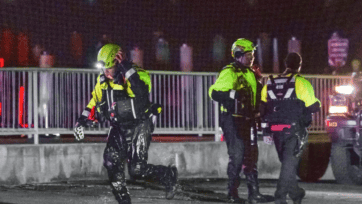(Image credit: Belur Ashok)
The largest infrastructure project in South Carolina’s history, the $2.1 billion Carolina Crossroads initiative, is making significant strides in untangling the infamously congested I-20, I-26, and I-126 interchange, locally known as “Malfunction Junction.” The project, led by the South Carolina Department of Transportation (SCDOT) and supported by HDR, is designed to modernize and expand the key corridor in Columbia, South Carolina, which has long struggled with severe traffic bottlenecks and a high accident rate.
Originally developed in the 1950s and 60s, the I-20/26/126 corridor now faces traffic demands far beyond its original capacity. Congestion worsens daily, with the population in the region projected to increase by 70% by 2040. To address this critical issue, SCDOT’s Carolina Crossroads project is being rolled out in five phases, each aimed at redesigning and expanding the corridor to handle current and future traffic volumes safely and efficiently.
Phase-by-Phase Overview
Phases 1 and 2, focusing on key enhancements to I-126 and I-20, began in 2022 and are nearing completion. These phases involve major upgrades such as a new interchange at Colonial Life Boulevard and another at Broad River Road. However, the most complex and impactful work is still to come, particularly in Phase 3, which targets the core of the congestion at “Malfunction Junction.”
HDR, the project’s prime consultant, has played a central role since the early stages, offering environmental analysis and documentation and continuing to assist with risk management and delivery strategies. The team recently reconfigured the Phase 3 design to mitigate significant utility and geotechnical risks, aiming to reduce costs and minimize delays. HDR Project Manager Ben Lewis noted that the use of a formal cost schedule risk analysis process has been effective in controlling the project’s budget and timeline.
Future Phases and Impacts
Later phases of the project will involve substantial bridge work, including replacing critical spans over the Saluda River and a CSX rail line, and widening I-20. These upgrades are expected to alleviate the corridor’s notorious traffic jams, ultimately saving the average commuter 112 hours per year. The modernization of this key corridor will not only improve daily travel for thousands of South Carolinians but also bolster the region’s economic vitality by ensuring safer and more efficient transportation.
Looking Ahead
As SCDOT continues to move forward with this monumental undertaking, the project remains critical to addressing the region’s growing traffic demands. With bids for future phases set to begin in 2025 and construction continuing into 2029, the Carolina Crossroads project aims to finally resolve one of the state’s most challenging infrastructure bottlenecks.
References
Folks, Will 2024, ‘Carolina Crossroads’ Update: SCDOT Targets ‘Malfunction Junction’, FitsNews, viewed 18h September 2024, <https://www.fitsnews.com/2024/02/28/carolina-crossroads-update-scdot-targets-malfunction-junction/>
2024, ‘‘South Carolina: The Carolina Crossroads Project’, ARTBA, viewed 18h September 2024, <https://www.artba.org/project-profile/south-carolina-the-carolina-crossroads-project/>
2024, ‘Carolina Crossroads Improvements Featured in ENR’, HDR, viewed 18h September 2024, <https://www.hdrinc.com/insights/carolina-crossroads-improvements-featured-enr>


























